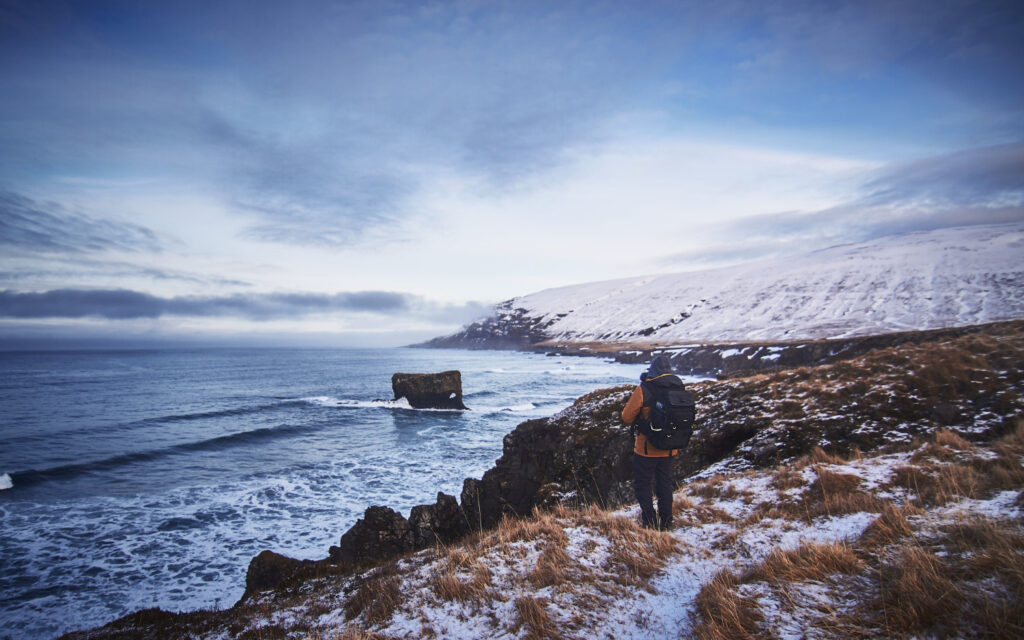Understanding Iceland’s Weather – How to Plan Your Trip Accordingly
 An old Icelandic says, “If you don’t like the weather, just wait ten minutes.” The island’s notoriously temperamental conditions can make or break a travel experience.
An old Icelandic says, “If you don’t like the weather, just wait ten minutes.” The island’s notoriously temperamental conditions can make or break a travel experience.
To avoid this, be flexible when planning your trip and add some indoor activities to your schedule if you have to. This will ensure that you have a great time no matter the conditions.
Spring
The weather in Spring is typically warm and pleasant. The snow is melting throughout the country, and the sun starts to show itself again, providing a nice break from the darkness of winter. This is also a great time to see Iceland’s famous waterfalls, as the snow melts and runoff fills them with water. So, this is how typical Iceland weather by month goes on. June and July are typically the hottest months, although they can be relaxed (and crowded). This is the best season for hiking trips and outdoor severe exploration as it is warm enough to wear a T-shirt and have a great experience comfortably. The long daylight hours make it easy to get out and enjoy nature and all the activities the Icelandic countryside has to offer.
The weather tends to start cooling down from August to September and can be very rainy. But it is still an excellent time to visit, as it is less crowded than in the summer and you can get fantastic deals on rental cars. The landscape is beautiful, and it is an excellent time to see the cute lupins and the irresistible puffins in some of their favorite locations. Birdwatching is also excellent at this time, and you can usually see a lot of different species.
Summer
In summer, the weather is mostly warm and sunny. Days are long, and daylight reaches well into the night. You can enjoy the outdoors in comfortable clothing and explore many attractions without many other people around.
However, it’s essential to remember that weather can change rapidly and sometimes unexpectedly. Clear blue skies can turn into a rainstorm or even a blizzard. And temperatures can drop quite a bit in the highlands.
If you’re a fan of the Northern Lights, September is a great month to visit Iceland. The Northern Lights become visible at this time due to the reversal of the sun’s position in the sky.
The island’s landscape is also changing color during this time. And it’s less crowded than during the summer months.
October is another exciting season to visit Iceland. The weather can be highly unpredictable, and it’s possible to experience all four seasons in a day or even an hour.
Some people prefer to rent a car in Iceland in autumn because the roads are still open. However, renting a car in the autumn is recommended only if you have 4WD experience and feel confident driving on icy or snowy roads. The Highlands hiking routes close at this time, and the F-roads may be impassable in certain places.
Autumn
In autumn, temperatures start to cool down slightly. During this time of year, Icelanders often say you could experience all four seasons in a day: warm sunshine, heavy rain, peaceful snow, and stiff wind are everyday experiences. This is also when you’re likely to see the Northern Lights if they are visible in your area of the country.
This season is also considered the offseason and less crowded than the summer months. Therefore, you have more flexibility when it comes to scheduling your activities. You can enjoy the top attractions and feel free from other tourists.
While most of Iceland has a relatively mild climate, specific geographic areas have subarctic, tundra, and highland weather conditions. The weather is influenced by a system of warm and cold ocean currents, glaciers, and highland plateaus, as well as by altitude.
Strong winds are characteristic of Iceland’s weather throughout the year, but they increase significantly during winter. These can make hiking difficult, especially if you plan to visit remote and highland regions. It is essential to check the weather forecasts and follow official advice on the safest ways to go hiking when traveling in winter. You should also dress appropriately. A good rule of thumb is to layer your clothes to adjust your attire according to the weather.
Winter
The winter season begins in mid-to-late December and lasts until the end of February, with a minimum of four to five hours of daylight daily. The days are short and often freezing, although temperatures vary from region to region.
Iceland can be sunny and snowy throughout this time, with the northern lights evident at night. It is the perfect season to visit for a magical winter wonderland experience!
While winter is a beautiful season to experience, it is also hazardous to travel around the country. Snowstorms, freezing winds, and difficult road conditions are all possible at any given time. If you visit Iceland during the winter, please ensure you have an all-wheel drive and are prepared for the ice and snow.
In Iceland, the weather changes quickly, and it is essential always to check the local forecast before you leave for a trip. You can also call the hotline on the Vedur website to speak with an Icelandic meteorologist and receive the latest updates.
March marks the official beginning of Spring and the melting of the winter snow. This is an excellent time for hiking and seeing Iceland’s magnificent waterfalls at their total capacity.
